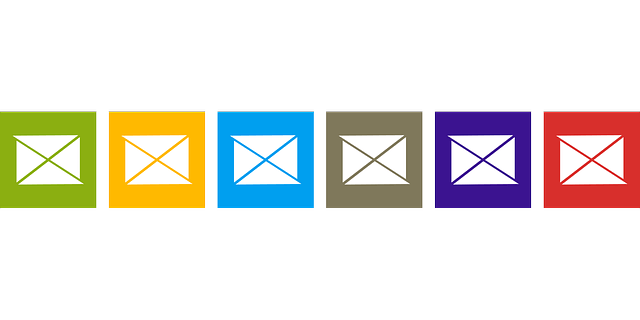 1. Send plain text emails
1. Send plain text emails
Send plain text emails. I see people sending follow up emails that have nothing valuable for the reader. In order to prevent your emails from going into the spam box, don’t keep emailing people who aren’t opening up your emails. Find the people who consistently open and click your emails and send them VIP content or give them early access to new content.
2. Message Preview is Overlooked
MailChimp makes it easy—you just replace the text prompt they provide to make it work. Other platforms, well, they vary. ExactTarget has a bug in their built-in preheader formatting that makes it not render in most email clients, which I’ve developed a multi-client workaround for.
Pre-headers are such a fun part of email—they can supplement the subject line, and give the subscriber more reason to open the email. They’re increasingly important on mobile. They’re also a great way for brands to show a little personality.
3. Email Address or From Name is “noreply”
Using a generic email “from name” such as “admin” or “noreply” People want to interact with people, not mailboxes.
When brands send emails from a “noreply” address (or an email address that never gets checked), they’re really saying “we don’t want to talk to you.” It’s an engagement opportunity that many teams miss—on one of the largest direct marketing channels out there.
4. Email Offers No Value to Customer
Build a relationship over time and then offer a service of some sort. So instead of being spammy, be helpful. Outreach and grow your list. You do this by offering something within every email. Content that is. Not a price tag.
5. Email Focuses on the Product, Not the Customer
Emails should serve the customer not the product. Often times the marketing team, not the product team is in charge of the email flow and their directive is to grow. If you get myopic about that task you forget that the most solid growth comes through simple, repeatable, service that is so good it’s sharable. Serving customers comes by meeting them in their email client with simple tasks and giving them more than they expect or more than they are paying for with their time.
6. Email is Void of Personality
There aren’t enough companies telling interesting, relevant stories to their users. People are interested in hearing about your company, or at least your perspective on what you’re best at, along with the people behind the product that they enjoy using. Using social cues and proof in products is a well understood approach, yet people don’t take it as seriously in their email marketing strategy. Spitfire Athlete’s emails are also great at this, sharing the stories of various successful athletes they’re partnering with to encourage users to reach their own fitness goals.
7. Email Contains Too Many Calls to Action (CTAs)
The biggest email marketing mistake I see is a lack of focus. Just like if a website has 50 calls to action, 30 blinking buttons and a navigation that’s longer than “War and Peace”, it’s not going to convert or retain any visitors. The same applies for each, the more focus there is on ONE idea, ONE call to action, ONE task for a user to complete, the more likely they are take that action.
Here’s one mistake a see a lot: giving people too many calls-to-action in an email. It’s confusing to the recipient and dilutes the effectiveness of the email campaign. Plus, it makes it harder to gauge the effectiveness of the email, since you don’t have a single metric you can look at (like click through rate).
8. Email Doesn’t Supply a Text Link
People still like text links. Be sure to include one above the fold and one below the fold. And ALWAYS put them on a line by themselves.
9. Email is Too Long
Avoid turning email marketing into a chore by doing the following:
Keep it short and simple! Pick a goal and write a simple, short email that leaves the reader in no doubt what their next step is. If you’ve got a lot to get off your chest, send short emails more often.
10. Email Contains a Personalization Faux Pas
I often see basic personalization issues. If you can’t get the basics right it’s not a good sign. Nothing feels less personal than seeing a personalization tag within a received email. Already know that the vast majority of email is automated, but there is a certain level of trust that is lost when this happens. Any decent marketing platform will allow you to send test emails that utilize full personalization rendering so that you don’t have to risk it.
11. Email is Only Images
Using all images as the entire email. It’s typically not mobile optimized. Entire content doesn’t appear if someone’s settings are “images off”—and what happens if the image links break! Sometimes not clear what’s clickable, and image-heavy email can be considered spam by filters. Looks like a giant ad.
12. Email Doesn’t Use any Images
Use at least one image inside of each email. Every split test I’ve done shows that people are MUCH more likely to click and image as opposed to a text link.

13. Emails Miss Out on Power of Plain Text
Don’t underestimate the power of the plain text email! Sometimes nicely designed emails for newsletters and product updates can increase conversion rates. But, for your first onboarding email, try a short, plain text note coming from a real person on your team. Ours has a 60 percent open rate!
Popular style of designed welcome email:
14. Emails are Sent Inconsistently
Simple: Not being consistent enough. I think once or twice per week is perfect, but you can’t miss.
15. Too Many or Too Few Emails are Sent
Overall, one of the most frequent mistakes we see email marketers making is underestimating, or overestimating the frequency with which their subscribers wish to hear from them.
There are simple ways to get around this issue. First of all, you can have your subscribers submit their email frequency preferences – either on subscribe, or later, via an email preference center or similar. Once you have sufficient data, you can segment accordingly.
16. Email Messages Overlap One Another
Lately, I’ve noticed a lack of coordination in my inbox. Multiple emails from the same online retailer in the same day, often with contradicting offers — meaning I had to navigate all the messages to figure out how to get the best deal on that lamp I’d had my eye on. This multi-email trend was at its peak during the holidays, and with all the hustle and bustle of the season I found myself unsubscribing from brands that I have known and trusted for years. I think the lesson is to send with your reader’s needs in mind instead of with your own business objective as the goal. It’ll pay off in the long run.
17. Emails are Effectively Pointless
Dumb: vacation properties (e.g. hotels) sending recurring newsletters promoting local deals. I stayed at a hotel once for a wedding, or went on a honeymoon to a remote location, and they keep offering me deals to come back. I am never going back.